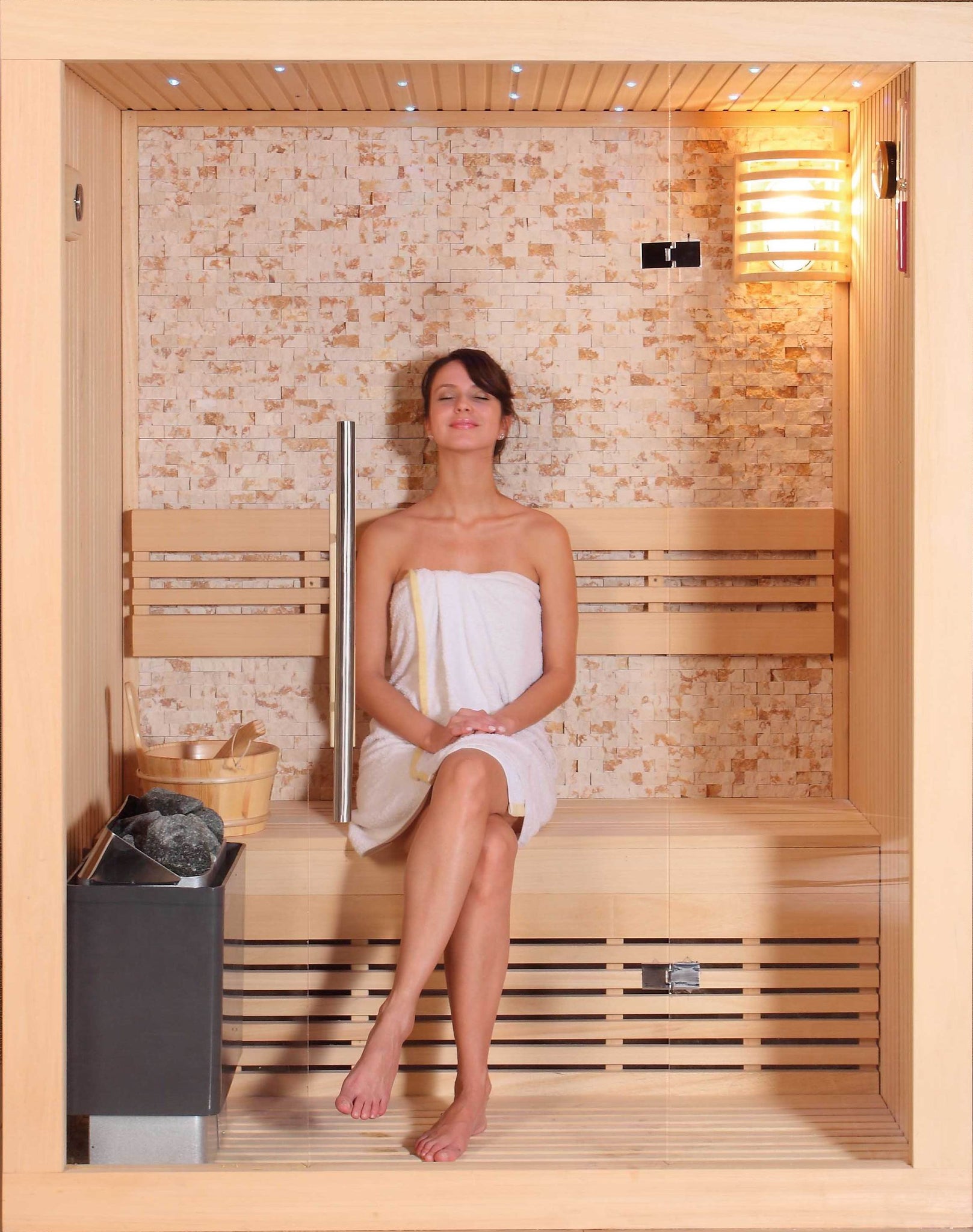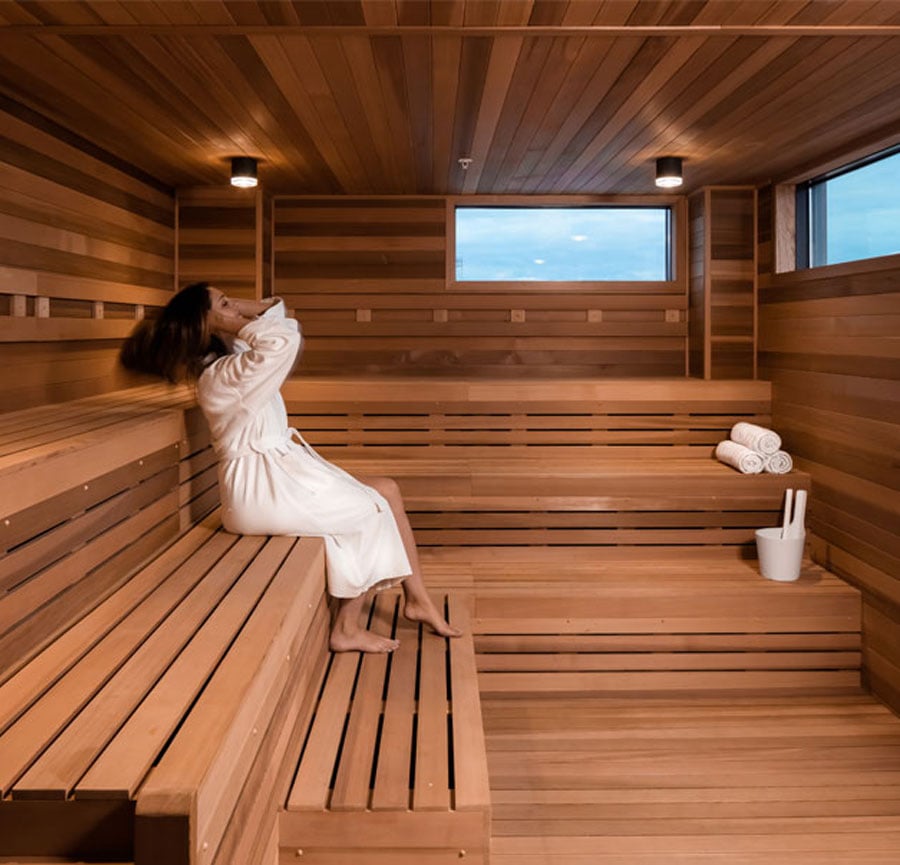The Basic Principles Of Traditional Sauna
The Basic Principles Of Traditional Sauna
Blog Article
A Biased View of Traditional Sauna
Table of Contents5 Easy Facts About Traditional Sauna ExplainedThe Single Strategy To Use For Traditional SaunaThe 15-Second Trick For Traditional SaunaNot known Facts About Traditional SaunaGetting My Traditional Sauna To Work
A lot of the weight lost in a sauna is water loss and is re-gained upon rehydrating. Without a doubt sauna can be an essential part of a healthy and balanced weight loss program. To take a look at the differences between typical and IR saunas, I will separate these into proven, academic, and produced distinctions.Thus, the most popular point in the saunawhich goes to the ceiling directly over the sauna heateris usually in between 185 and 190 F. Claims that a standard sauna surpasses 200 F is merely not true and not appropriate for electric saunas sold in the US. The temperature for a far-infrared sauna is normally established in between 120 and 140 F; however, unlike the conventional sauna, the objective in and IR area is not to accomplish a high temperature level.
Due to the fact that of this, the temperature level distinction is nearly pointless, because excessive sweating causes both sauna types, however the method of heating the body is various. In an IR sauna the bather will really feel hot and will sweat a lot, yet at much lower temperatures (Traditional Sauna). Therefore, if the objective is to spend longer time periods in the sauna, the IR sauna is an excellent selection
When a conventional sauna has actually been appropriately warmed, the sauna walls are cozy, the air temperature has actually attained established temperature level and the rocks are incredibly heated. As an interesting side note, the warmed wall surfaces and the rocks are sending out far-infrared warmth, integrated with the warmed air, to develop an "wrapping up heat".
Some Known Questions About Traditional Sauna.

When the heat is achieved, the components cycle on and off to maintain the high temperature level. A lot of typical sauna customers take pleasure in pouring water over the rocks to produce heavy steam to increase sauna humidity levels. The advantages of pouring water over the rocks consist of: making the room much more comfy, dampening the nasal passages, and enabling the use of aromatherapy by blending necessary oils with the water.

When the energy click to find out more enters the body, it causes the body temperature level to increase and ultimately leads to sweating. In an infrared sauna it's essential for the emitters/heaters to remain on nearly continuously. Because there is no mass of rocks to maintain warmth, the sauna will certainly cool down if the emitters shut off.
As stated over, the sauna bather in an infrared area intends to place himself before operating emitters to get optimal take advantage of the warm. The heating time for both rooms can be extremely various, relying on just how the spaces are used. For a standard sauna, a bather needs to enable 30-40 minutes for the area to accomplish a preferred temperature level and to appropriately pre-heat the rocks.
3 Simple Techniques For Traditional Sauna
A well constructed sauna will typically accomplish a temperature of 150-160 F in about 30-40 mins. For hotter temperature levels, the area might require to warm for a longer period. Once the space accomplishes established temperature level, the heater will cycle on and off, usually operating regarding 50% of the time. The shielded walls and this contact form the warmed rocks will certainly keep the area warm and at secure temperatures.

Conventional saunas tend to be bigger (thus make use of even more electricity) than infrared saunas, although typical saunas are certainly offered in one and two individual dimensions. For a two-person traditional sauna, 5x6 or 5x7 dimension is most prominent. The leading bench can easily seat two or three individuals and is also long enough to lie down throughout the sauna session.
Some Known Details About Traditional Sauna
The average cost per kWH of electrical power in the U.S. is roughly $0.11, so a 4.5 kW heating unit will certainly cost approximately $.50 to compete one hour, if the heater runs constantly for one hour. Typically a sauna heating system will run for 75% of the very first hour and 50% of subsequent hours on considering that the components cycle once the established temperature level is attained.

There is a seldom discussed distinction in the social experience in between the 2 rooms. While our society has actually lost a few of the social benefit of the conventional sauna experience, it can be extremely socially gratifying (Traditional Sauna). From family time in the sauna, to heart-felt discussions with loved ones, to sauna partiesthe conventional sauna experience can lead to intimate socializing
Traditional Sauna Fundamentals Explained
Most greater end infrared rooms consist of colored light treatment, audio systems and full-glass fronts.
Report this page